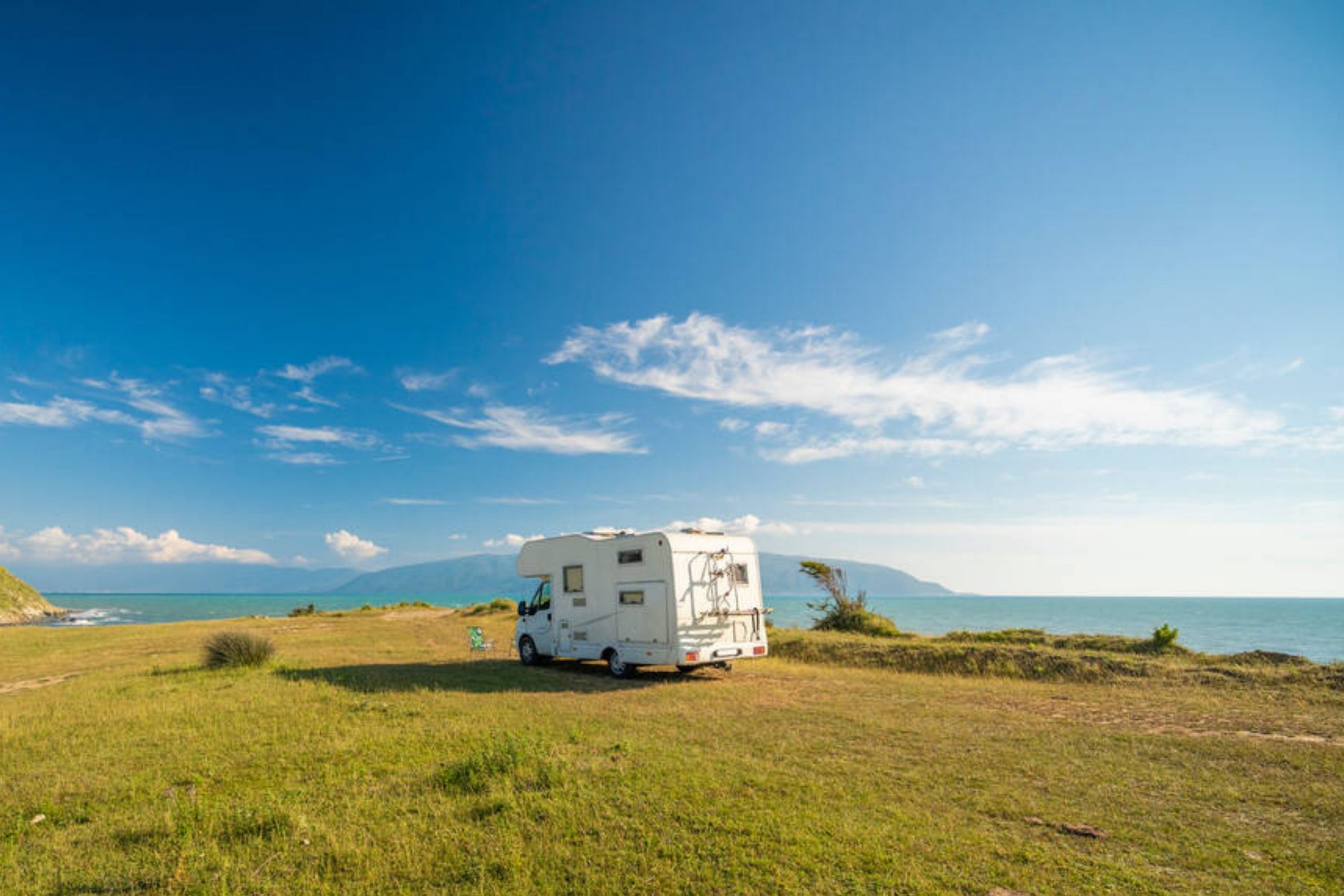Having an RV is great! As an owner of one, you can drive your recreational vehicle almost anywhere where cars can go and spend your weekend or vacation each time in a new place.
However, if you already have an RV, you surely know that it requires somewhat more care and attention in comparison to a regular brick and mortar house!
In particular, owners of trailers often wonder how their water tanks can be sanitized properly.
And since one of the best working options is to add bleach to the system, another issue rises up: how much time should you keep bleach in there until it sanitizes the entire system?
In this article, you will learn more about adding bleach to your RV water tank.
Also, we will explain how long it should stay there to work properly and sanitize your water tank, and how exactly the water system along with the water tank of your RV should be sanitized step by step.
You will learn how much bleach to use, is it possible that it damages your RV water tank somehow, and a lot of extra handy tips on the subject.
Finally, you will find out how to define that your water system is clean again.
How Much Time Does Bleach Need to Stay In My RV Water Tank to Sanitize It?
AS an owner of a recreational vehicle, you definitely know that bleach is a well-known water tank sanitizer.
However, if you are going to use it for this purpose for the first time, you might be wondering how much time it needs to work in your water system, and also, how much bleach you might need in order to sanitize your RV fresh water tank.
In general, for sanitizing your RV fresh water system, you need to prepare a sanitizing mixture first of all. For that, dilute bleach in water in the amount of one quarter cup bleach per one gallon of water.
Then, put a quarter cup bleach diluted in one gallon of water into the system. The regular amount of this bleach solution that you use is supposed to be one gallon of mixture per every 15 gallons of your RV tank capacity.
Once the mixture is ready and you pour it into the system, run it through the water system following the instructions provided in your owner’s manual.
And keep in mind that this bleach solution is supposed to stay in your RV water system for at least four hours!
Sime RV owners express concern about the amount of time and whether or not it is ok to leave this bleach solution in the water system overnight.
People are worried that this mixture can be harmful for the pipes, valve, lines, tank and pump.
However, according to the feedback from real RV owners, we can tell you that it is fine if you even leave this diluted bleach mixture to work in your RV water system overnight!
That might be especially needed if the system requires deep cleaning.
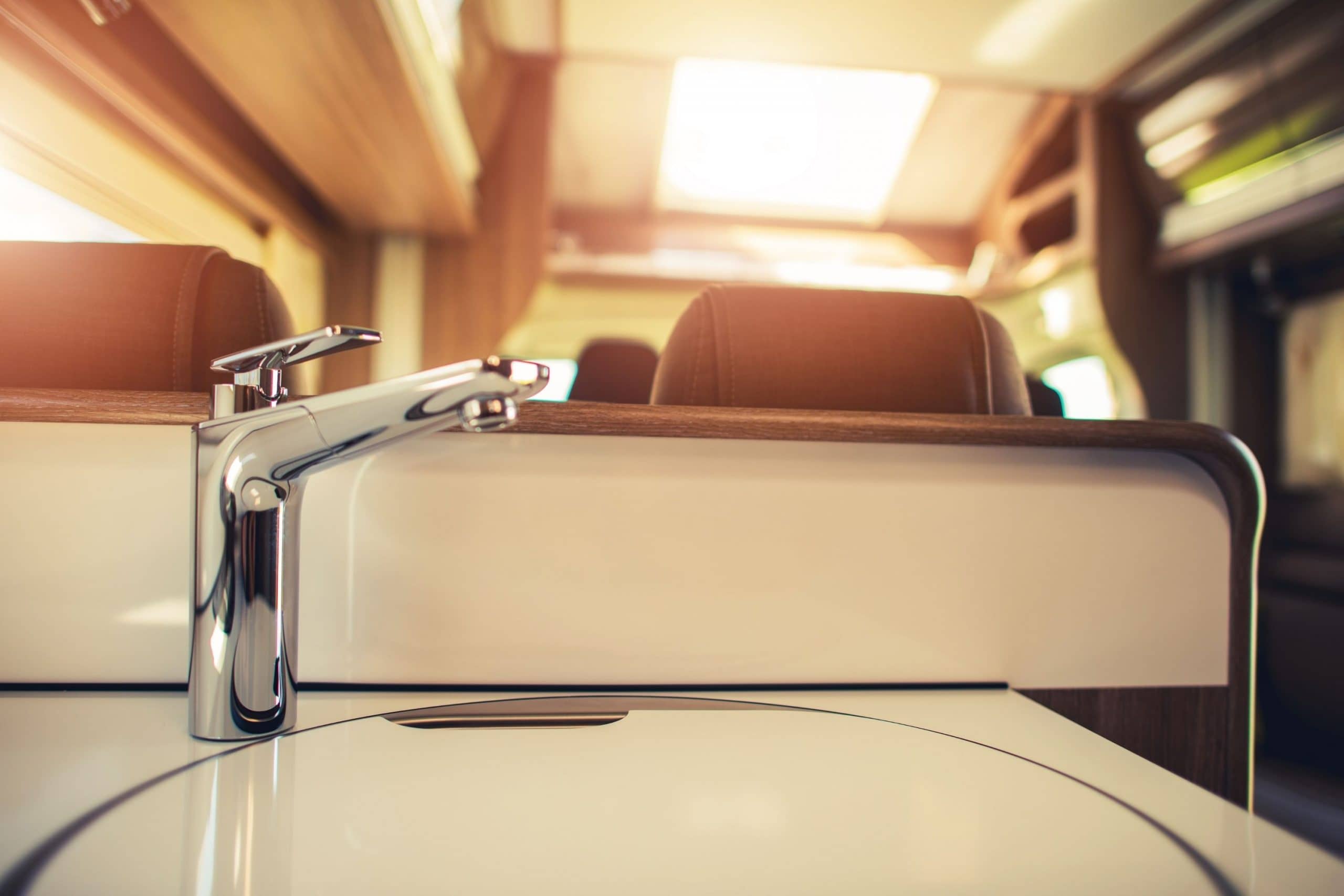
How to Sanitize Your RV Water System And Tank In 5 Steps
So now you are probably curious about how exactly your trailer’s water system should be cleaned!
And if you are going to undergo the cleaning procedure for the first time, being aware of all the details is indeed essential.
Of course, we realize that you folks understand clearly why cleaning your RV water tank is a must, but still, let us remind you of that just in case. Simply speaking, sanitizing the tank of your trailer will ensure that you stay both worry-free and healthy.
In addition, it is not that hard to do to be honest.
And while you can always pay a professional to do it, of course, there is really no need to do that unless you are extremely busy or you are afraid of doing anything wrong.
But in case you decide to do it yourself, be sure that the procedure will not require any special tools or skills from you.
All you need to complete it successfully is a measuring cup, a funnel, and some household bleach.

Turn Off Your Water Heater and Drain Your Freshwater System
Always start with turning the water heater off and draining your RV’s water system before you proceed to any cleaning actions!
We are sure that you don’t want to drain the freshwater system with the water heater being turned on since this will damage the water heater.
So you need to turn it off and let it cool completely before you drain the water.
It is not a bad idea to have the water pump on as well. Like this, you will ensure that you can get all of the water out of the system before you start sanitizing.
Figure Out How Much Bleach Will Be Needed For the Cleaning Procedure
To sanitize your RV water tank and system, you will typically need 1/4 cup of bleach for every 15 or 16 gallons of water in your freshwater tank. This amount is also equal to one ounce per eight gallons.
So first of all, make the calculations based on these ratios. That means, if you have a 20-gallon freshwater tank on your trailer, you would need 2.5 ounces of bleach to sanitize your entire water system.
Also, make sure that you don’t add the bleach straight to your freshwater tank! Dilute it first.
To do that, you will need to take the amount of bleach you have calculated you would need for your specific recreational vehicle and add it to at least a gallon of water.
Then pour this water-and-bleach solution into the freshwater tank with the help of a funnel.
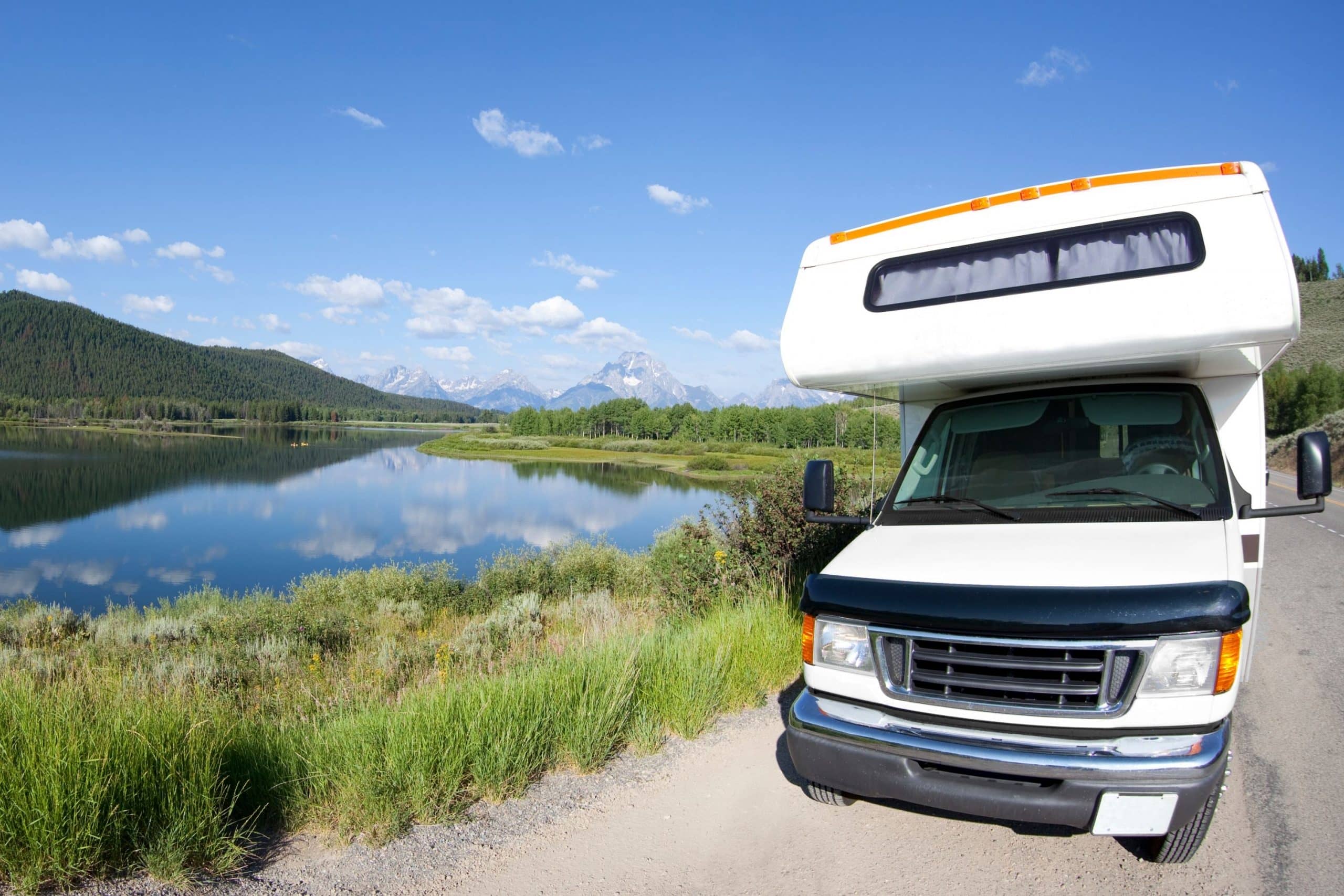
Fill the Freshwater Tank With Potable Water and Pump It Through The System
The next step you need to take on your way to the clean and sanitized water tank is to fill the freshwater tank with clean, potable water. Make sure to fill it all the way.
This step will ensure that the tank and the rest of the system get fully sanitized.
In addition, you also need to make sure that the water with the bleach solution gets all the way through the system!
To make sure that it happens, we recommend you turn on all the faucets to ensure the bleach water makes its way to every part of your freshwater system.
Once the water is circulating through, you can turn them off again.
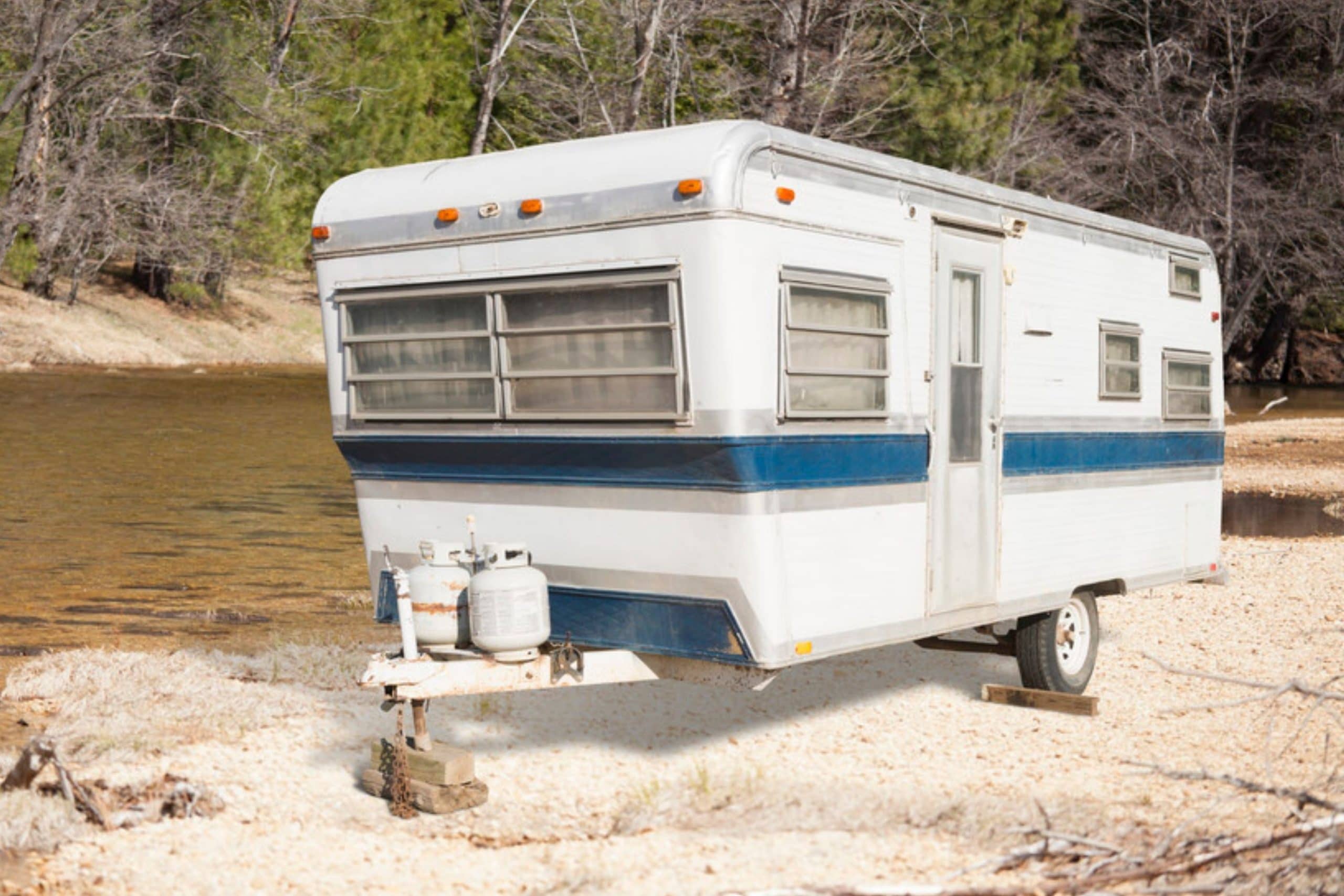
Let the Water Sit
Now you need to let the water sit for twelve hours. See, the bleach solution you have prepared will need enough time to really sanitize your system well.
Unlike a common belief, you can’t just run some bleach-water through your freshwater system in a few minutes and hope that it works!
This is why we suggest letting the sanitizing solution sit in your freshwater system overnight. It is a great way to make sure it gets the job done properly.
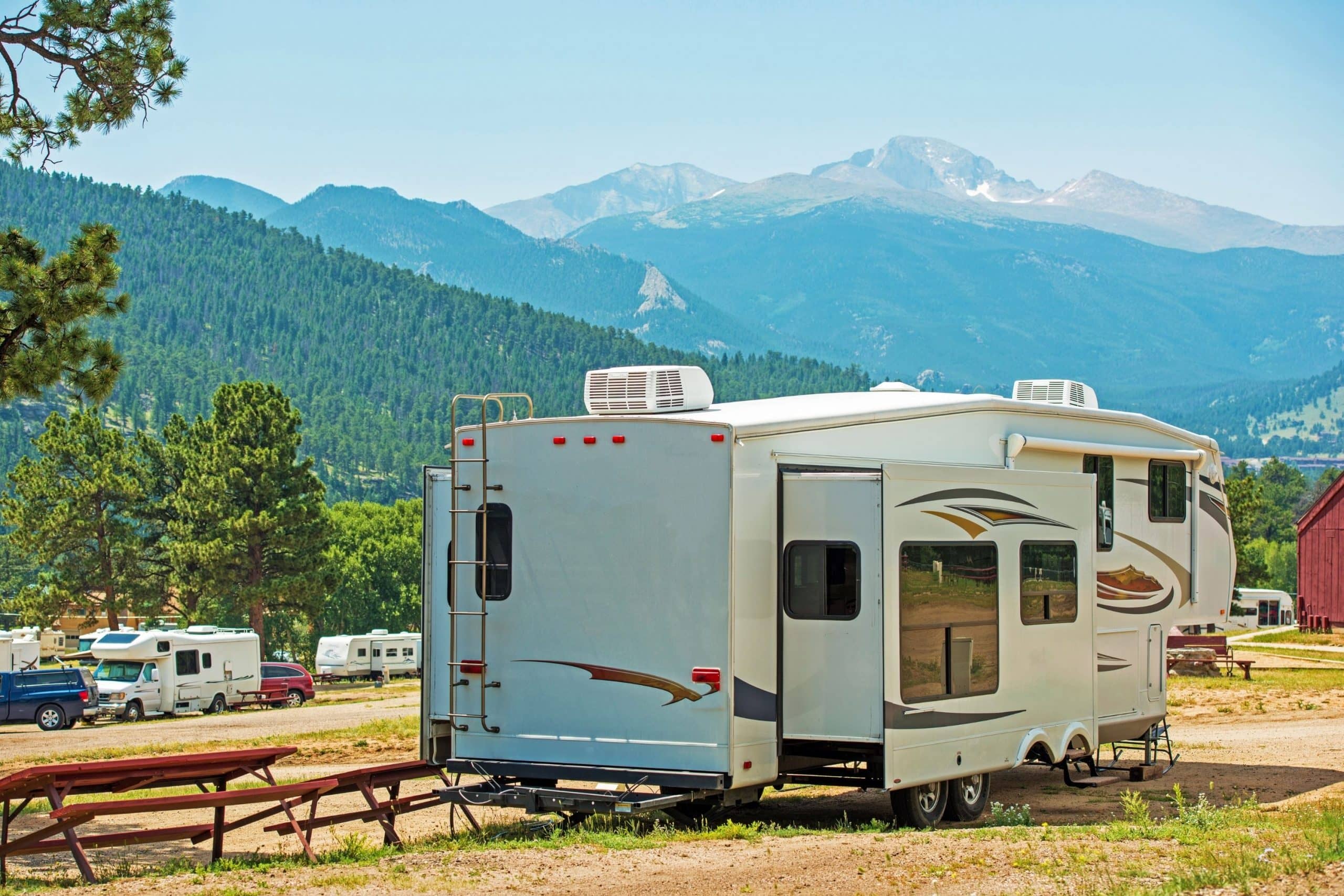
Related: How Much Wind Will Destroy a Mobile Home?
Drain the Water Tank And Flush the Entire System
Now, it is time to drain all the water out again after you let your trailer sit for at least twelve hours with the bleach solution in the freshwater system. Once you drain it, refill it with fresh water and start circulating it through the system with the help of your water pump.
Open all the faucets and flush the system until you stop smelling the bleach.
It may, however, take you a few draining sessions to get all of the bleach smell out.
But you should not worry about doing this step multiple times though!
We would even suggest continuing to flush the water system of your RV even after the bleach smell is gone.
Like this, you will make sure that you extract all the sanitizing chemicals from the system.
Once this step is done, we would recommend you replace any water filters on your rig.
After you have replaced those and switched your water heater back on, you can be sure that your RV is ready for the new roads and trips again!
So, this was the complete and detailed description of how your RV water system and water tank should be cleaned and sanitized.
With all that in mind, you will be able to keep your trailer water system safe and clean easily ensuring that your trips are always safe.

Related: How to Clean RV Awning?
Will Too Much Bleach Damage My RV Water Tank?
This is a common question that the owners of RVs ask. If I add too much bleach, won’t it cause any damage to my pipes, vent, or pump?
Or to the water tank itself? In fact, not really. See, since you are only going to leave the diluted bleach solution sit for eight hours or more, it will not be able to affect the plastic water tank somehow significantly in terms of damaging it.
Also, it will not be able to hurt the pipes or the pump.
You can even go with a stronger solution, of course, for instance, two cups of bleach for every fifty gallons of water, or three cups as an option, and not hurt anything at all.
Also, here is another proof of bleach being absolutely safe for your RV water pipes and everything else: everyone knows that bleach always comes in plastic jugs and it tends to sit on a shelf for years in some households!
And, as you all know for sure, there were no issues of bleach damaging the container.
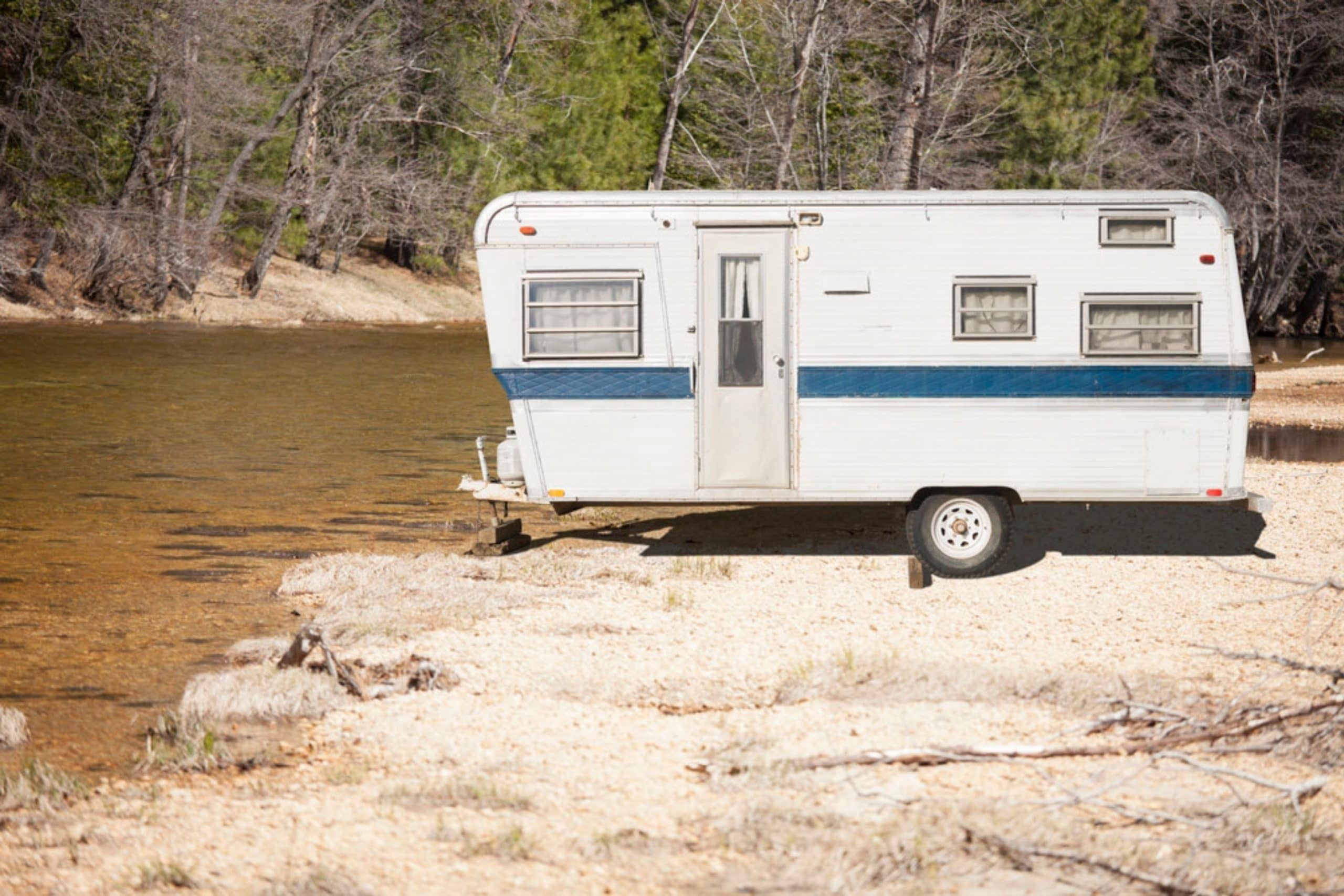
Is It Possible That I Use Too Little Bleach?
Well, this is another, completely opposite issue that RV owners are often bothered about!
What if I add too little bleach into the water tank and it will not work at all? Is it possible? Let’s figure this out.
In fact, there is no such thing as using too little bleach when it comes to sanitizing an RV water tank.
The point of sanitizing the water tank in a trailer is to have safe water in your water tank, not completely purified and disinfected one!
In fact, it is basically nearly impossible to completely destroy every living bacteria in an RV water tank just by pouring bleach into it! Instead, you just want that water won’t make you sick and is still acceptable to drink.
So how much bleach will be used for sanitizing is completely up to you to decide.
We can only tell you that some RV owners actually add about a tablespoon of bleach to their water tanks at every refill just for good measure. See, bleach in this small amount is absolutely safe to drink, and you probably will not even notice it.
However, it still does its job and purifies the water you drink. In fact, many water districts add a light amount of bleach just to kill off pathogens at a small degree.
But of course, in case you are sure that your water tank is heavily polluted with bacteria and algae, then certainly feel free to use more bleach!
It will never hurt any part of your trailer to do so. Of course, this water should not be ingested considering how much contamination it already has in it!
This is exactly the situation when you rather want to leave it for several hours to sit and drain.
[wp-faq-schema title=”Frequently Asked Questions”]
